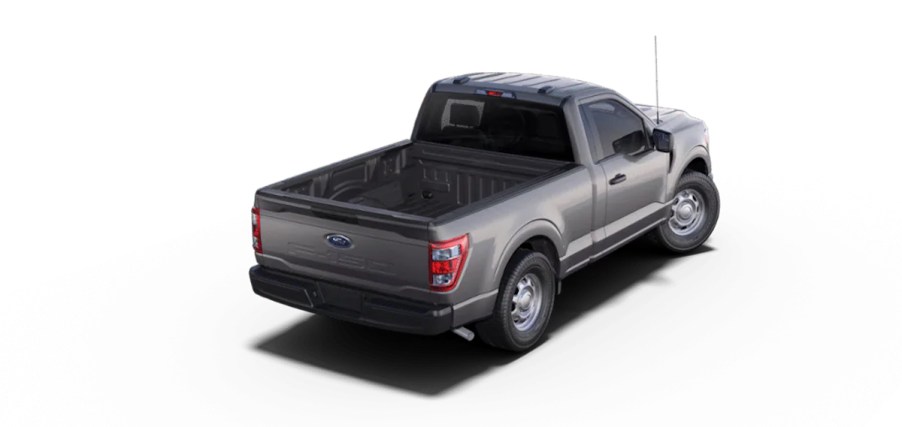
Ford F-150 Truck Beds Have Shrunk by 50% Since 1961
The Ford F-150 is currently the best-selling car in the American car market, and there are a few reasons for that. One of the main reasons why the F-150 and other full-size pickup trucks have a lot of buzz is because of the versatility of their truck beds. Interestingly though, Ford has actually made the F-150’s truck bed 50% smaller and less useful in the last few decades.

This is what the fourth generation of the Ford F-150 looked like
Axios recently published a history of the pickup truck, and the article focused on the Ford F-150’s history. Although the truck has a long history that spans decades, the F-150 only started to resemble its modern versions starting with its fourth generation, which debuted in 1961.
This generation of the truck was longer and more angular in its design, and that was a departure from the rounder shape that it had.
The main reason why the truck was longer was because of its truck bed. These trucks came with a 6.5-foot bed, and drivers could swap that out for an 8-foot bed or a 9-foot bed in the later model years of the generation.
The truck had a wheelbase of around 122 inches, and its optional 4.8-liter V8 engine generated 160 hp. Due to the length of the truck’s bed, the cab only accounted for 36% of the truck’s total length. The bed accounted for 64%. Those numbers eventually flipped as Ford upgraded the truck’s cab throughout the years.
The Ford F-150’s truck bed has shrunk a lot since then
After over two decades, the Detroit-based automaker gave the popular pickup truck a major redesign for its seventh generation. This generation started in 1980, and overall, it was similar to the older trucks that’ve been around since the ’60s.
The truck bed was still long, and it represented about 60% of the truck’s length. That’s a 4% drop from before, but this trend ramped up in later generations.
In the 10th generation, which began in 1997, Ford again redesigned the F-150 significantly. Its body was streamlined, and this resulted in the cab-to-bed ratio becoming an even 50/50 split. In the truck’s 11th generation, which started in 2004, the automaker made full second-row seats a standard feature. This increased the cab’s size even more, and the cab now represented 60% of the truck’s length compared to 40% from the bed.
By the truck’s 13th generation, which started in 2015, the automaker once again enlarged the F-150’s cab. Currently, the standard F-150’s cab is 63% of the truck’s length, while the bed is only 37%. That’s a nearly 50% decline compared to the 1961 version’s ratios.
This trend has happened for several reasons
The reason why the popular full-size truck’s cab-to-bed ratio has flipped over the last 60 years is simple. Ford and other automakers continued to upgrade the interior of their trucks, and that included making the cab bigger.
In order to compensate for the growing size of the cab, automakers decided to shrink the size of the bed. A 5.5-foot bed is a common option on the F-150, for example.
On top of that, automakers have also changed their marketing tactics over the years. While many automakers still market their truck as a workhorse, those trucks are also being marketed as consumer vehicles that can be used for day-to-day errands. This is likely why, according to Axios, 63% of truck owners rarely or never use their truck to tow cargo, and 52% use their truck for commuting.


